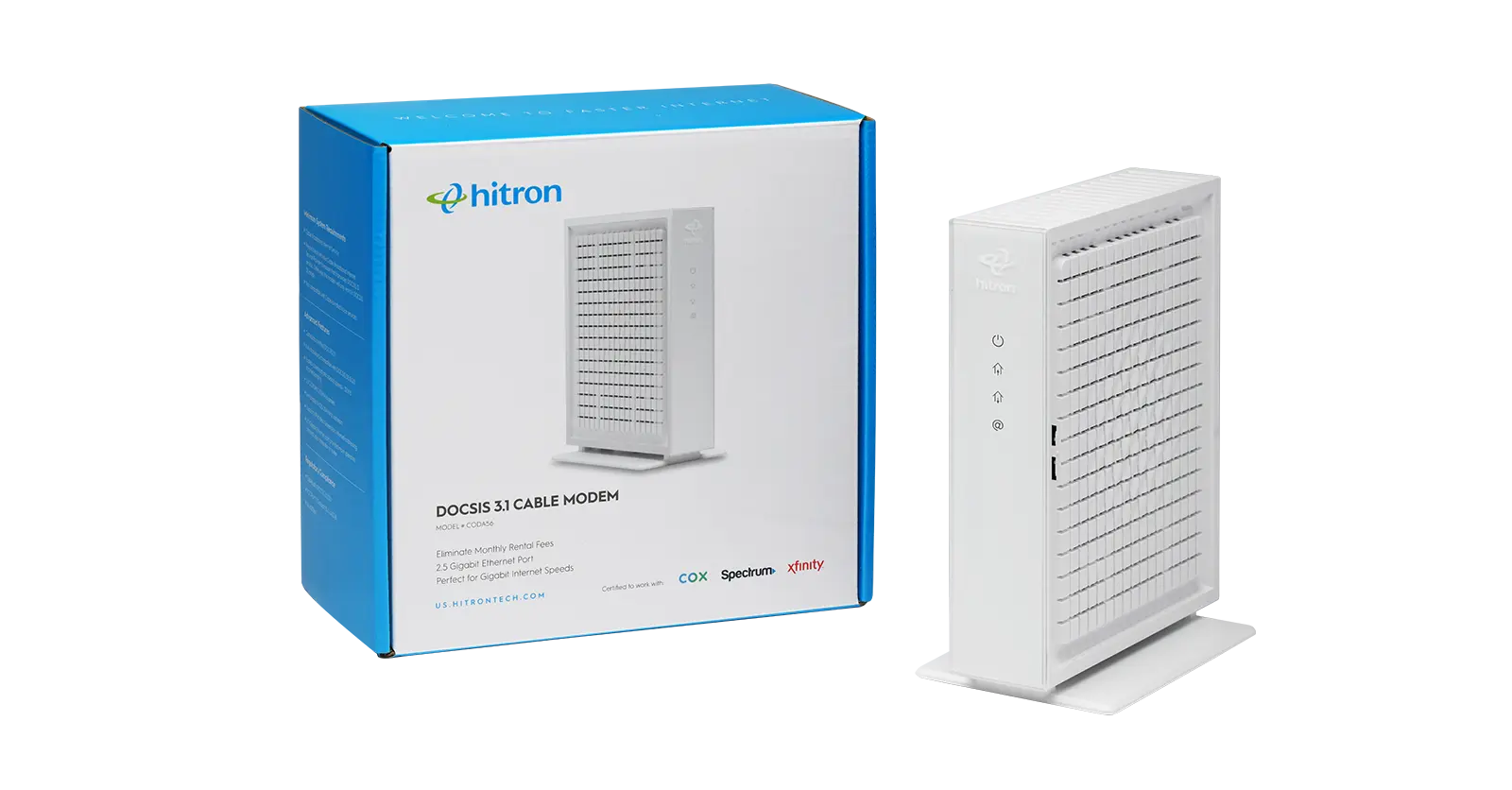A modem is the essential device that connects your home to the Internet. It receives signals from your Internet Service Provider (ISP)—whether through cable, DSL, fiber, or cellular—and converts them into digital data your devices can use.
One common example is the cable modem, which works with coaxial cable-based Internet services like Xfinity, Cox, and Spectrum.
What Does a Modem Actually Do?
A modem—short for modulator-demodulator—acts as a gateway between your home and the Internet. It receives incoming signals from your Internet provider and translates them into digital information your connected devices can understand.
No matter what Internet plan you have, you need a modem to get online.
Can I Get Internet with Just a Modem?
Yes – but only in a limited way. A modem alone can connect one device directly to the Internet using an Ethernet cable. But if you want to use WiFi to connect multiple devices wirelessly, or if you need internet across your entire home, you’ll also need a router.
What’s the Difference Between a Modem and a Router?
- A modem connects your home to the Internet.
- A router shares that connection with your other devices, often through WiFi.
WiFi refers to the wireless signal created by your router, which allows you to connect phones, tablets, laptops, and smart TVs without cables—letting you move freely throughout your home while staying connected.
Without a modem, there is no Internet.
Without a router, your modem can only connect one device via cable—no Wi-Fi.
Some devices combine both functions into one box (called a modem-router combo), but many households prefer using a separate modem and router for greater speed, flexibility, and future upgrades.
Want more detail? Read: The Difference Between a Modem and a Router
What Type of Modem Do You Need?
Your modem must match the type of Internet service available in your area. It also needs to be compatible with your Internet Service Provider (ISP). Here’s what to look for:
Internet Type
Modem Type Needed
Notes
Important: Always check your ISP’s approved modem list to confirm compatibility before purchasing.
If your ISP is a cable provider, you’ll need a DOCSIS-compatible cable modem. Hitron specializes in this category, offering advanced models like the CODA and CODA56, which are approved by most major providers.
Where Should You Place the Modem?
Modem placement matters for performance and convenience. Here’s where to put it based on your Internet type:
- Cable or DSL: Place the modem near the coaxial or phone jack where the service enters your home.
- Fiber (ONT): The provider installs the modem-equivalent ONT, often on a wall or in a utility room.
- 5G/LTE: Place the modem near a window or area with a strong cellular signal.
For the best performance, your modem—and router, if separate—should be in a central location if possible – and away from large appliances, thick walls, or electronics that may cause interference.
Modem Speeds and Technologies
Not all modems support the same speeds. The technology standard used matters—especially for cable Internet:
Modem Type
Standard/Tech
Speed Range
Why it matters:
If your modem can’t handle the speeds your plan offers, you won’t get full performance. For cable users, DOCSIS 3.1 is the gold standard. Hitron’s CODA modems are built on this standard, ensuring optimal speed and efficiency for modern households.
Why Do You Need a Modem?
The modem is what gives you access to the Internet—it’s the translator between your ISP’s signal and your devices. Without it, you simply can’t get online.
A reliable, high-performance modem helps you:
- Avoid connection slowdowns
- Fully utilize your ISP’s speed plan
- Eliminate rental equipment fees
- Future-proof your home Internet setup
What to Consider When Buying a Modem
Before you shop, ask yourself:
What kind of Internet service do I have?
What speed am I paying for?
Is the modem approved by my ISP?
Does it support DOCSIS 3.1 (if using cable)?
Do I need a router too—or a combo device?
If you’re using cable Internet and want a modem that’s powerful and easy to set up, Hitron’s CODA (1 Gigabit port) and CODA56 (2.5 Gigabit port) are excellent DOCSIS 3.1 options. They’re designed for heavy streaming, gaming, video calls, and smart homes.
Quick Recap
- A modem is the first step in getting online—it connects your home to your Internet provider.
- Your modem type must match your ISP (cable, DSL, fiber, 5G).
- A router is needed for WiFi and multiple connected devices.
- Modems vary in speed and technology—DOCSIS 3.1 is the best choice for cable.
- Buying your own modem gives you more control, speed, and cost savings.
FAQs
What does a modem do?
It connects your home to your ISP and converts the signal into data your devices can use.
Do I need both a modem and a router?
Yes. The modem gets you online; the router shares the connection across your home—often via WiFi.
Can I use a modem for fiber Internet?
Not exactly. Fiber typically uses an ONT, which functions like a modem but is installed and maintained by your provider.
Are Hitron modems compatible with major providers?
Yes. Hitron’s DOCSIS 3.1 modems are certified for use with Xfinity, Cox, Spectrum, and other leading cable ISPs.
Why not just rent a modem from my ISP?
One word – Save – Modem rentals can cost $120–$180/year. Buying your own modem saves money and gives you better performance and features.
Final Thoughts
If fiber or 5G isn’t yet available in your area, cable Internet remains an extremely fast and reliable option. To get the most out of it, consider owning your own DOCSIS 3.1 cable modem. You’ll reduce monthly fees, boost your home Internet speeds, and enjoy greater stability for everything from work to entertainment.
Explore Hitron’s DOCSIS 3.1 Cable Modems
Or Visit the Hitron Learn Center for more expert insights
